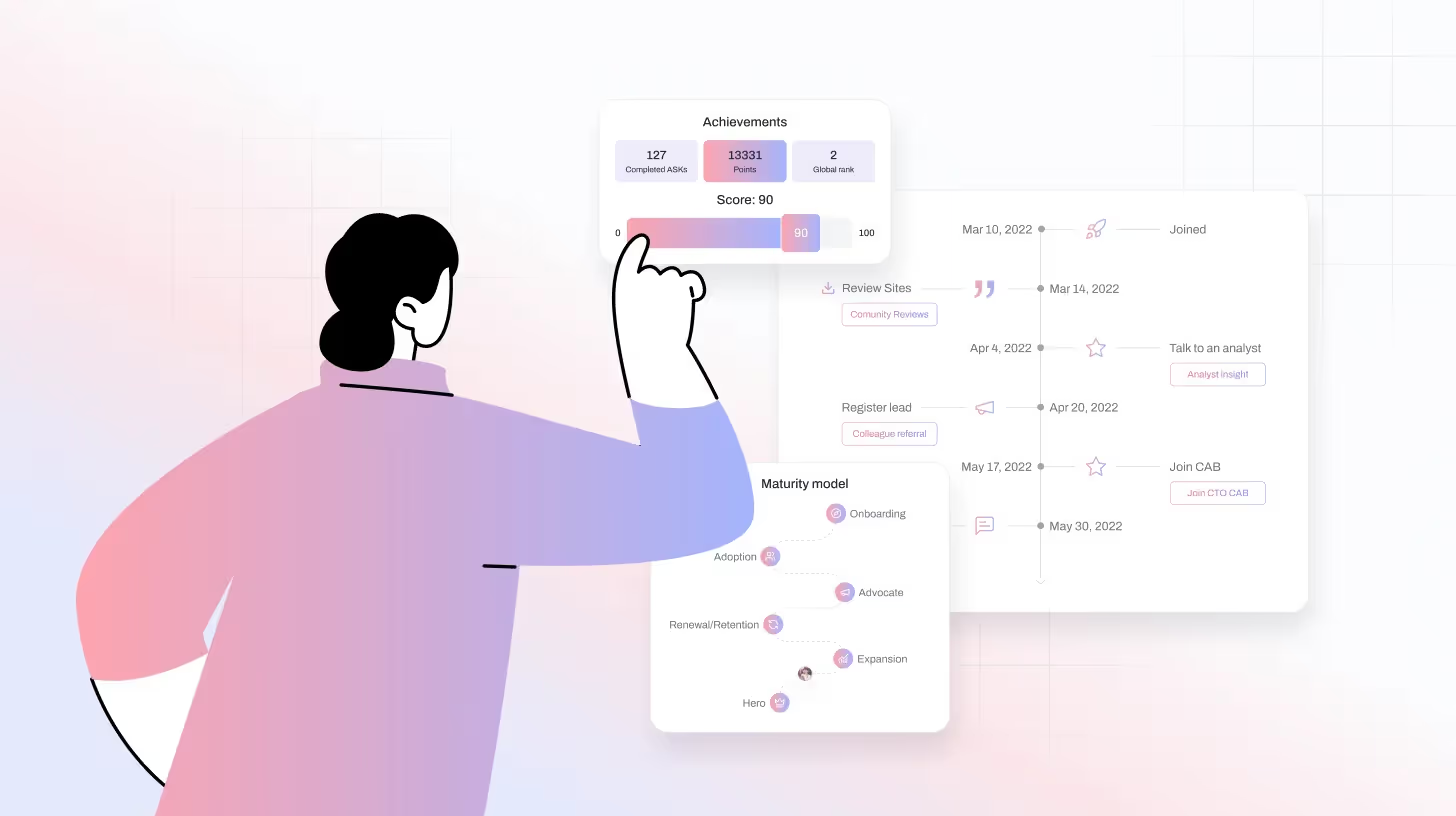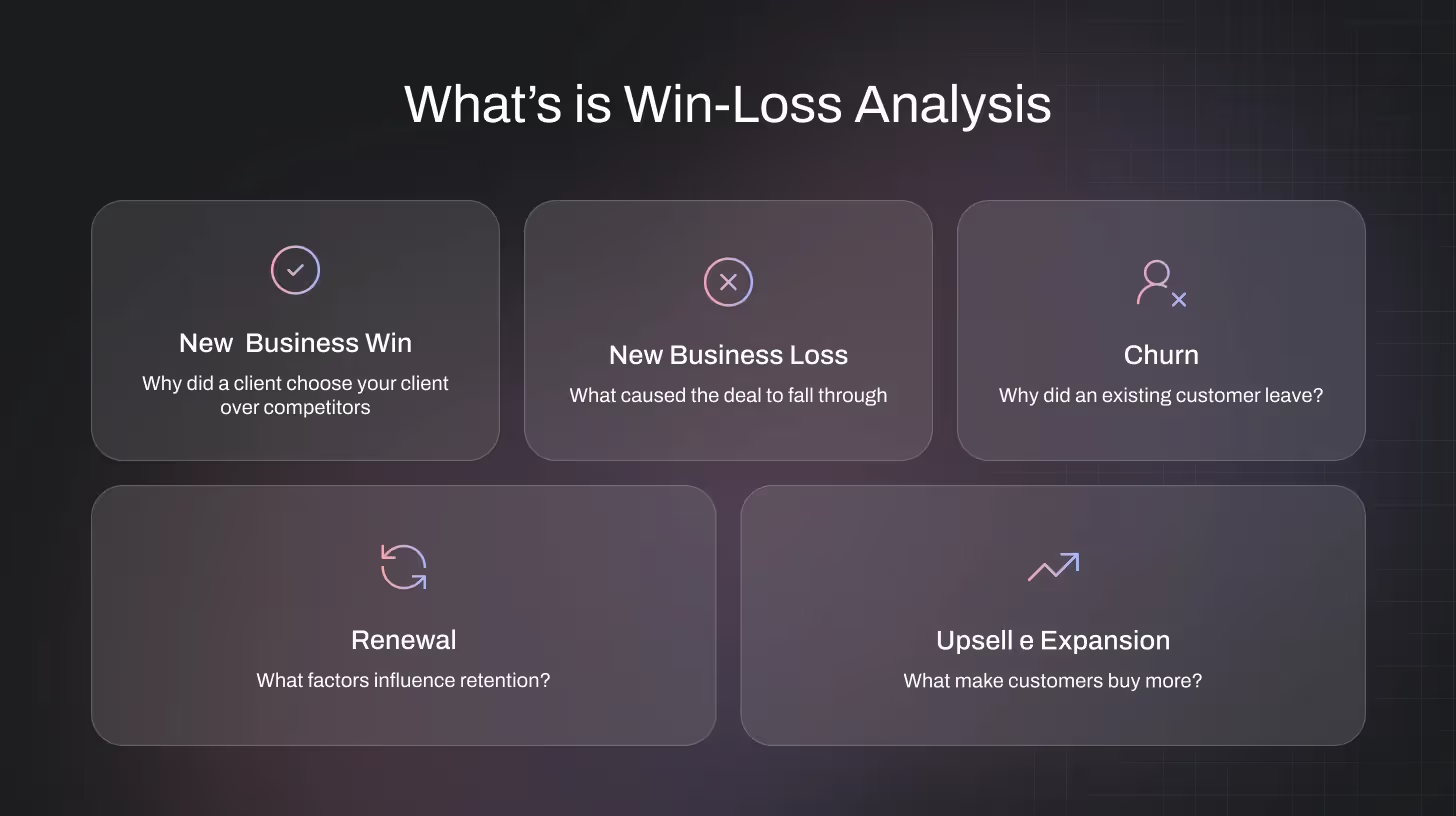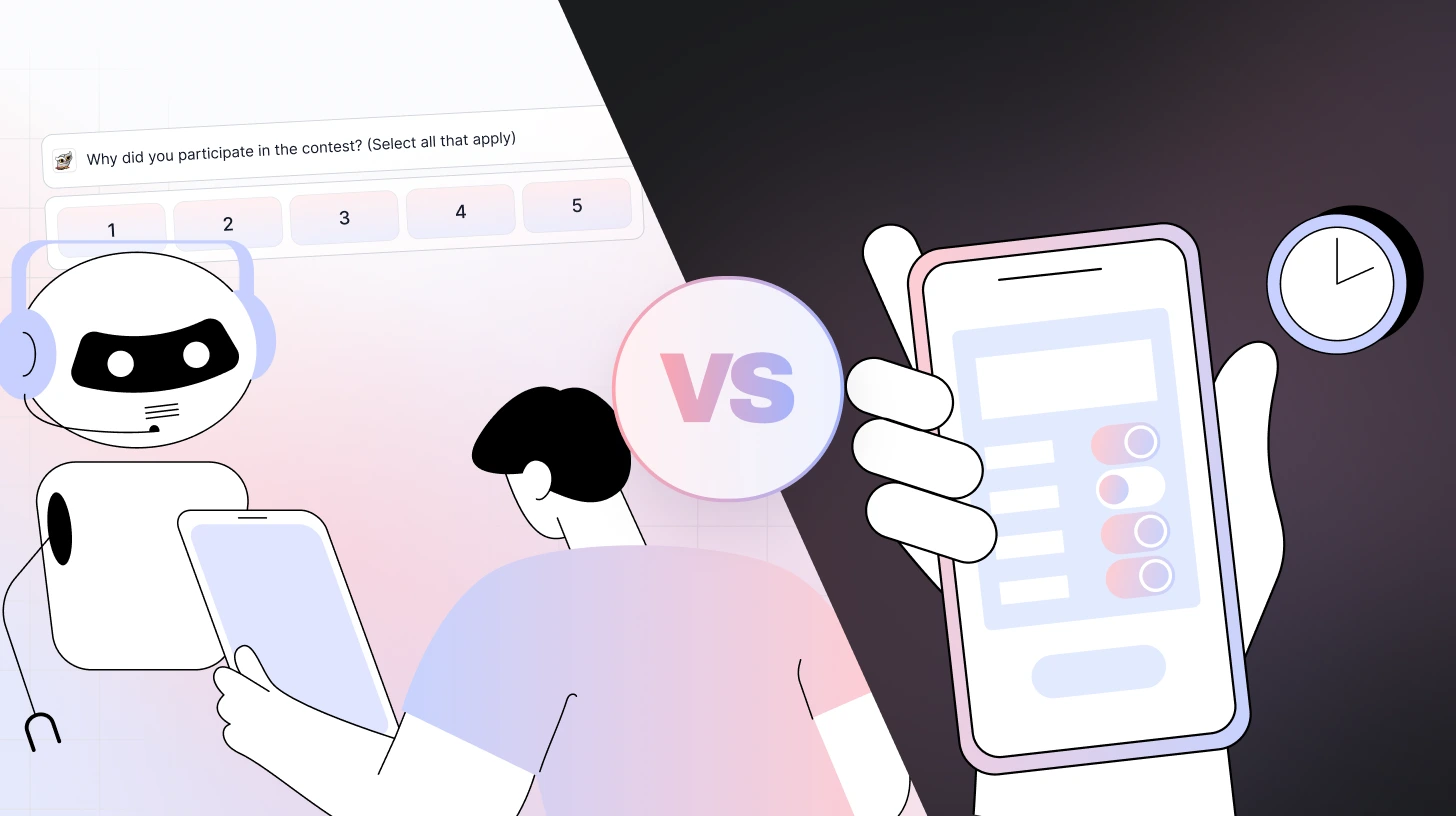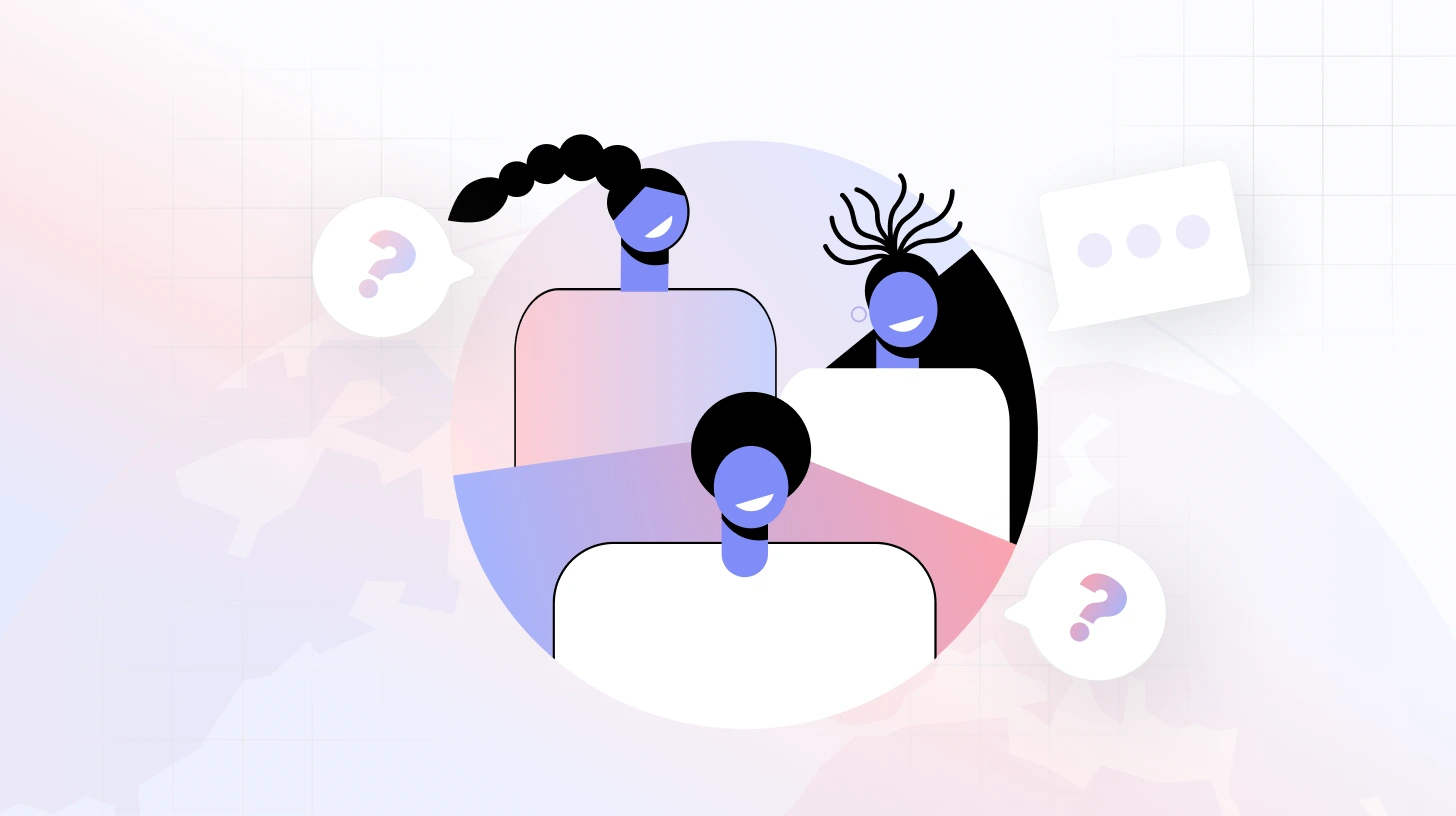 Blog
Blog Customer-Led Growth (CLG): The Future of SaaS Growth in 2025
Customer-Led Growth (CLG): The Future of SaaS Growth in 2025Customer-Led Growth (CLG): The Future of SaaS Growth in 2025
_%20The%20Future%20of%20SaaS%20Growth%20in%202025.avif)
Struggling to turn your product into measurable growth?
You’ve built something great, but getting customers to notice, adopt, and stick isn’t automatic. Marketing campaigns fall flat, sales pitches miss the mark, and product features alone aren’t enough to drive results.
For years, B2B companies relied on sales-led growth, pushing deals through traditional funnels or product-led growth, hoping features would sell themselves. But the market is changing. Customers now expect personalized experiences, real outcomes, and a company that listens. Growth no longer starts with your product or your sales pitch; it starts with your customer.
This shift has given rise to a new strategy: Customer-Led Growth (CLG), where growth begins with your customers’ voices, not your internal roadmap.
In this article, we’ll dive deep into what Customer-Led Growth really means, why it’s becoming essential in the B2B market, and how you can implement it with real-world examples from leading SaaS companies, including how TheySaid helps businesses put CLG into action through AI Surveys, AI Interviews, and Win/Loss Analysis.
What is Customer-Led Growth?
Before we move to the formal definition of customer-led growth, let’s first understand what it means to be customer-led. At its core, being customer-led means putting customers at the centre of every business decision. It involves several key aspects:
- Deeply understanding your customer’s needs and preferences.
- Mapping every touchpoint and tailoring services and products that meet customers’ expectations.
- Using feedback, surveys, interviews, and behavioural data to continuously learn from customers.
- Turn customer insights into business decisions that improve your go-to marketing strategies.
- Make sure the alignment of sales, marketing, product ,and customer success teams.
In short, a customer-led company grows by helping its customers succeed first. When customers achieve their goals, adoption, loyalty, and revenue growth naturally follow.
What sets Customer-Led Growth apart is that all business decisions are based on real customer data rather than assumptions or historical precedents.
By definition, customer-led growth is a business methodology where customers drive the direction and success of your business. Instead of relying primarily on sales tactics (sales-led growth) or product adoption (product-led growth), this approach focuses on understanding the customers, collecting customer insights, and optimising their experiences. By centering the business around the customer, organizations don’t just build products; they create outcomes, loyalty, and long-term growth.
Why Customer-Led Growth is More Important Than Ever In SaaS
Many SaaS businesses still focus heavily on new customer acquisition. Marketing teams chase leads, sales teams push to close deals, and product teams aim to activate users. While acquiring new customers is essential, overemphasizing it often causes companies to neglect their most valuable asset: existing customers.
Customer expectations have evolved. In everyday life, we experience personalized, interactive, and immediate services, and we now expect the same in the SaaS products we rely on. Ignoring this throughout the customer journey leads to high churn, low loyalty, and weak advocacy.
Even the best marketing campaigns or the slickest sales pitches can’t compensate for a poor customer experience.
Think of growth like a bucket with a hole: you can keep adding water (new customers), but if you’re losing existing ones, the bucket will never fill.
This is where TheySaid’s Win/Loss Analysis comes in. By conducting structured, AI-powered interviews with lost, retained, or churned customers, you gain actionable insights into why deals succeed or fail. These insights allow your SaaS teams to optimize the entire customer experience, reduce churn, improve retention, and grow revenue sustainably.
Also Read: How AI Win/Loss Analysis Boosts Sales by Understanding Buyer Feedback
The Financial Impact of CLG
- Profit Boost Through Retention: Increasing customer retention by just 5% can lead to a profit increase of 25% to 95%, underscoring the financial benefits of focusing on existing customers. Custify
- Higher Net Revenue Retention (NRR): Companies with an Average Revenue Per Account (ARPA) over $500 per month report Net Revenue Retention rates exceeding 100%, indicating that existing customers are not only staying but also expanding their usage. UXCam
- Valuation Premium for High NRR: SaaS companies with NRR rates above 120% are trading at a remarkable 63% premium over the market median, highlighting how investors value customer retention and expansion. Opensend
By focusing on CLG, SaaS businesses can:
- Enhance customer experience by listening and acting on feedback.
- Build loyalty and advocacy, turning satisfied users into promoters.
- Drive sustainable growth through higher retention, upsells, and predictable revenue.

How is CLG different from other growth strategies?
If you’ve been in SaaS long enough, you’ve seen the playbook evolve. First came sales-led growth, then product-led growth. Now, we’re entering a new era of customer-led growth (CLG) where the companies that listen the hardest grow the fastest.
Let’s break that down in real terms.
Sales-led growth (SLG)
Sales-led growth (SLG) built some of the biggest enterprise companies of the past two decades. Growth happened through skilled reps building relationships, closing deals, and nurturing accounts. It worked, but it was expensive, manual, and slow. In a digital-first market, relying purely on human persuasion doesn’t scale. Worse, sales teams often lose touch with the “why.” Why did a buyer really choose you or walk away at the last second? Without structured feedback, that insight gets lost.
Product-Led Growth
Then came the era of product-led growth (PLG). SaaS companies like Slack and Notion proved that if your product is great enough, it can sell itself. The experience becomes the funnel where users sign up, get value instantly, and tell their peers.
It’s a brilliant model for velocity and scale. But it has one weakness: it tells you what users do, not why they do it.
Analytics reveal clicks and drop-offs, but not the motivations, frustrations, or deal-breakers behind them. Without those answers, product teams end up optimizing symptoms instead of solving real problems.
Customer-Led Growth: Real
Customer-led growth (CLG) flips the perspective. Instead of guessing what customers want or retrofitting a strategy around product usage data, CLG companies start every decision with actual customer insight. In CLG, feedback isn’t a one-time survey; it’s an ongoing conversation that fuels every part of the business: product, marketing, sales, and CX.
How to Implement a Customer-Led Growth Strategy
Moving to a customer-led growth (CLG) model isn’t about overhauling your business overnight; it’s about shifting your mindset. Instead of thinking “How do we sell more?”, start asking “How do we help customers win more?”
Here’s how leading SaaS companies are putting CLG into action:
1. Start with continuous customer feedback
Don’t rely on quarterly NPS scores or end-of-year reviews. CLG companies gather feedback in real time from product usage, customer success calls, lost deals, and even silent churn. The goal is to turn every touchpoint into a listening post.
This is where platforms like TheySaid make a big difference. With AI-powered interviews and win-loss analysis, companies can understand why customers buy, renew, or leave and use those insights to recover up to 30% of lost deals sitting in the pipeline.
2. Align your teams around customer outcomes
In a customer-led model, marketing, sales, product, and success all speak the same language: the customer’s. Every decision from messaging to feature prioritization should tie back to solving a customer problem or improving their journey.
3. Close the loop on insights
Data is useless if it’s not shared. Leading CLG organizations make insights visible across the organization. For example, feedback from lost deals might guide sales enablement, while customer usage trends might influence product roadmap discussions.
4. Reimagine metrics for CLG
Traditional growth models obsess over top-line revenue and acquisition. CLG companies look deeper, tracking customer lifetime value, retention, advocacy, and expansion. Because when customers grow, so does your business.
5. Build a culture of empathy and listening
Customer-led growth isn’t just a strategy, it’s a culture. Every employee should know what frustrates or excites your customers. The companies that truly win are the ones that listen, adapt, and act faster than anyone else.

How Do You Measure Customer-Led Growth (CLG)?
Measuring customer-led growth isn’t as simple as tracking new signups or quarterly revenue because CLG is about relationships, not just results. There’s no one-size-fits-all system, but there are clear indicators that show how customer trust, satisfaction, and engagement drive your business forward.
Here are a few key metrics to track:
- Net Promoter Score (NPS): How likely are customers to recommend you to others?
- Customer Satisfaction (CSAT): How happy are they with each experience or interaction?
- Retention Rate: Are customers staying longer and expanding their usage over time?
- Churn Rate: How many customers are walking away — and why?
- Referral Rate: How often do happy customers bring in new ones?
Most CLG-driven organizations combine these indicators into a real-time dashboard to visualize the health of their customer relationships. But the real value comes from understanding the why behind the numbers, and that’s where AI-powered insights change the game.
A modern way to think about this comes from the concept of “value vs. friction.” Customer experience can be seen as:
CX = Value received ÷ Friction experienced
Every customer interaction adds value or introduces friction. The job of a CLG company is to reduce friction while increasing perceived value, whether that’s through faster onboarding, smarter support, or proactive outreach.
So when measuring CLG success, ask yourself:
Does this improve the experience for the customer?
Does it create more value than friction?
If the answer is yes, you’re on the right track.
Examples of Customer-Led SaaS Companies
How TheySaid Redefines Customer-Led Growth with AI
At TheySaid, we believe the future of growth isn’t sales-led or product-led, it’s customer-led.
For too long, companies have been guessing what customers want. We built TheySaid to eliminate that guesswork using AI Surveys and AI Interviews that surface what real customers are saying, feeling, and deciding in real time.
Our platform transforms scattered feedback into structured, actionable intelligence so every team, from Sales to Product to Customer Success, can align around the customer’s voice.
Here’s how:
Ready to Turn Feedback Into Growth?
See how leading SaaS companies use TheySaid to transform customer insights into revenue, retention, and market leadership.
Book a Demo and experience the power of AI-driven, customer-led growth.

FAQs
How do I know if my company needs CLG?
If you’re struggling with churn, low NPS, or misalignment between your product and what customers truly value, that’s your sign. CLG helps you connect the dots between what customers say, what they do, and what actually drives renewal and expansion.
Can CLG and Product-Led Growth work together?
Absolutely. The best SaaS companies combine both using product usage data (PLG) and customer feedback (CLG) to drive smarter, faster decisions. Product-led shows what users are doing; customer-led reveals why they’re doing it. Together, they create unstoppable growth.
What KPIs should I track to measure CLG success?
Leading SaaS teams track:
- Net Promoter Score (NPS)
- Customer Retention & Expansion Rate
- Churn Reduction
- Customer Lifetime Value (CLV)
- Deal Win Rate (through AI Win/Loss insights)
These metrics reveal how effectively your organisation listens, learns, and adapts to your customers.
















.svg)